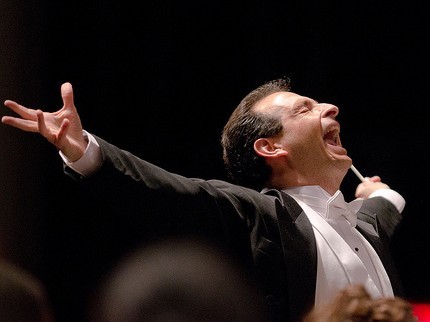Seeing through Your Character’s Eyes
Novelists are very familiar with the term POV, or point of view. Whether only one point of view is used throughout a novel or many, every scene in a novel has to be in some point of view. In first-person POV, the camera is always in one character’s head, and the story is told through her and watching her as the plot plays on. With third-person POV, the camera may move from character to character, but can only be in one person’s “head” at a time—whoever is the POV character for the scene.
Using an omniscient third-person POV gives an author a little more leeway to flit in and out of many characters’ heads and know things the characters may have no clue of. The omniscient storyteller is akin to a god who knows and sees all, but tells only what he chooses. The scope of a novelist’s creativity is bound and determined by POV.
A movie, for the most part, takes on the role of omniscient storyteller. Sometimes you’ll come across a story that is being told by a character who we don’t see directly speaking but addresses the viewer (called Voice Over, or V. O. in a screenplay—see the excerpt below). For example, in the screenplay The Shawshank Redemption, written by Frank Darabont (based on a story by Stephen King) near the beginning of the movie, after we see the protagonist Andy Defresne convicted (wrongly) of murdering his wife and being ordered to serve two life sentences, we are introduced to Red (played by Morgan Freeman), a man who’s been in the clink for twenty years. We see him briefly before the parole board attesting to his rehabilitation, followed by a Close-Up of his parole form being stamped in red ink with the large word Rejected. Then we hear the voice of Red speaking from “offstage,” and we understand now the movie is going to be told from his point of view.
RED emerges into fading daylight, slouches low-key through the activity, worn cap on his head, exchanging hellos and doing minor business. He’s an important man here.
RED (V.O.)
There’s a con like me in every prison in America, I guess. I’m the guy who can get it for you. Cigarettes, a bag of reefer if you’re partial, a bottle of brandy to celebrate your kid’s high school graduation. Damn near anything, within reason.
He slips somebody a pack of smokes, smooth sleight-of-hand.
RED (V.O.)
Yes sir, I’m a regular Sears & Roebuck.
TWO SHORT SIREN BLASTS issue from the main tower, drawing everybody’s attention to the loading dock. The outer gate swings open. . . revealing a gray prison bus outside.
RED (V.O.)
So when Andy Dufresne came to me in 1949 and asked me to smuggle Rita Hayworth into the prison for him, I told him no problem. And it wasn’t.
In a movie like The Shawshank Redemption, you have the equivalent, roughly, of a first-person story. Of course, there are many scenes Red is not in, such as the great scene in which his buddy Andy locks himself in the office and blasts opera through the loudspeakers into the yard. And the scenes in which Andy escapes. But in a film like this, being told clearly from some point way in the future, the storyteller can relate the account of what happened with an omniscient POV.
An Unfeeling Observer
Other movies that don’t use this type of structure use the camera as the POV. Instead of using one character to tell the story, the camera is the observer and recorder of events, and a camera has no feelings, emotions, subjective thoughts, interpretations, or commentary. This is important to understand when discussing the camera shot POV. Here, for instance, is a POV shot from The Fugitive:
Gerard continues after Kimble.
The helicopter circles and follows from above.
INT. PENTHOUSE / DOOR TO ROOF – NIGHT
Renfro triggers his radio.
RENFRO
There is a U.S. Marshal out there. Hold your fire!
HELICOPTER’S POV
FOLLOWING Kimble. Its beam tracking Kimble across the rooftop. He moves through the blowers and duct work. Kimble is gaining ground on Nichols.
ON SHARPSHOOTER
He is about to fire when he hears through his radio.
RADIO (V.O.)
Hold your fire.
The shooter pulls back.
Surely a helicopter can’t emote or ponder what is going on, but in a movie, it can have a POV.
What I’m focusing on here is the cinematic effect of POV, which is wholly different from what novelists are accustomed to. We’re going to look further at just how novelists can use this cinematic, impersonal POV camera shot to good effect in their scenes in next week’s post.
This week, think about how you might use an impersonal, objective POV shot in some of your scenes. Are there places in your novel where you want the POV character to be watching the action but you don’t want the reader to know at all what they’re thinking or feeling? When your character is essentially recording what they see and not reacting? Play around with this idea and stay tuned for some examples in next week’s post.












first, love the photo of the little one w/giant glasses, big smile 😉
and secondly, really interested in this pov-nuance of personal vs impersonal
“…places in your novel where you want the POV character to be watching the action but you don’t want the reader to know at all what they’re thinking or feeling? When your character is essentially recording what they see and not reacting?” –
and often, what i’ve realize after, is the pov character either didn’t know what to think or feel, or doesn’t become aware of it til later (ie, has to process what’s happening)
all in all, so very interesting for me, thanks so much 😉
Yeah, omniscient perspective works great in movies, but I don’t like it in books. It’s hard to do well, so I recommend staying away from it unless you have a really good reason for using omniscient perspective. Whatever you choose, be consistent!
Very well thought out, as always! I’ve struggled to explain the importance of POV to very new writers (although they usually get it pretty fast) and it’s lovely to see that other writers also see it as vital.
I do try quite often to implement that last little bit of advice – even if you’re locked firmly into a character’s perspective, it doesn’t necessarily mean that you have to report everything they’re thinking or feeling. The POV character is likely drawing conclusions about the emotions and motivations of the other characters from outward signs such as facial expressions, body language, context and dialogue. You can sometimes create a sort of “forced” omniscient view simply by limiting what you write down to these observed outward signs, and let the reader work it out in the same way that your POV character has to.
If only it was as easy to do as it sounds, lol!
You give title to that which is there.
“I know nothing of this!” lied the Vizier.
Pepy-Seti knew the Vizier was lying, but said, “Thank Hathor for that, my Lord.”
They both smiled.
I struggled with the POV of my story for years. There were many stories to be told. I think I finally found the best way to tell them all, esp. my protagonist’s story.
I will find out soon what Suzanne thinks. 😉
C.S., for all of your followers I highly recommend Save The Cat, by Blake Snyder (no longer with us), as it’s just as helpful for novel writing as it is for Screenwriting. Have you read it?
I haven’t, but I’ve heard great things about it.